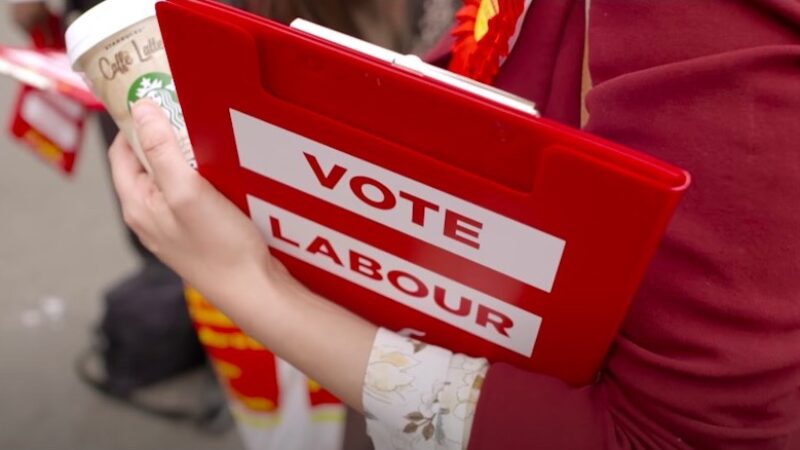
Elections are being held over the next four months – yes, really, four months – for 18 seats on Labour’s ruling body, which is soon to be made up of 39 members. The results of these contests will help to shape the party’s future.
The national executive committee (NEC) has oversight of compliance, audit procedures, policy development and party rules. It currently plays a major role in dealing with internal complaints, though this is expected to change soon with the introduction of an independent process, and can make decisions that affect the outcome of parliamentary candidate selections, though again Keir Starmer has pledged to reduce that power by ending NEC impositions.
Alice Perry goes into more detail about the functions of the NEC here. The bottom line is that the judgement and politics of NEC members can make a huge difference to the party’s direction: examples include the move to allow Jeremy Corbyn to be automatically placed on the leadership contest ballot paper in 2016, and more recently the appointment of a new general secretary.
Which NEC seats are up?
Nine Constituency Labour Party (CLP) representatives. All of the member section seats are up. Two incumbents were Labour First/Progress endorsed and won their seats in recent by-elections, while the other seven were chosen as Corbynite candidates, though Peter Willsman was suspended last year and has not been attending NEC meetings. Only around half of the sitting CLP reps are restanding.
One disabled representative. This is a newly created position on Labour’s NEC, which is now being elected for the first time.
One youth representative. The incumbent is Lara McNeill, from the party’s left, and she is standing again. A number of rival candidates have emerged.
Two Labour councillors. These are held by soft left Islington councillor Alice Perry, who is deputy whip at Local Government Association (LGA) Labour, and Nick Forbes, leader of Newcastle City Council and of LGA Labour. Both are standing again.
Three Parliamentary Labour Party (PLP) representatives. Three MPs will be chosen. The trio is currently George Howarth, Margaret Beckett and Shabana Mahmood.
One treasurer. The post has been held for ten years by Diana Holland, who is also assistant general secretary of Unite. She is standing again.
One Welsh Labour representative. Mick Antoniw, a Member of the Senedd representing Pontypridd, is standing again. Former Welsh Labour leader Carwyn Jones is also standing.
What is the timetable?
- Friday 10th July, noon – Deadline for candidate statements to be submitted to the ‘candidate portal’
- Saturday 11th July – Nominations open for treasurer, CLP, disabled, youth and councillor posts
- Sunday 27th September, midnight – Nominations deadline for CLPs, unions and Labour groups
- Monday 19th October – Ballot dispatch begins
- Thursday 12th November, noon – Ballot closes
- Friday 13th November – Results announced
How is each seat elected?
Labour’s NEC recently voted in favour of switching from first-past-the-post to using a single transferable vote (STV) system for the members’ section of the body. This reform introduces unpredictability to the CLP rep elections, and it has already changed the way that slates have formed: all factional groups have put forward less than nine candidates for the seats in order to maximise first preferences.
In each section, candidates first need to reach the required threshold of nominations. Once they have secured a place on the ballot, it goes to a vote. The nomination requirements, voting systems and electorates vary between sections. All candidates must have 12 months’ membership by October 19th.
CLP rep candidates need at least five CLPs to nominate them, and the nine reps are elected by all party members via a one-member-one-vote STV system.
Disabled rep candidates need at least five CLPs or two trade unions to nominate them, and the rep is elected by an electoral college of 50% OMOV of self-identified disabled members and 50% affiliated trade unions.
Youth rep candidates need at least 50 young members and two affiliate groups to nominate them, and the rep is elected by an electoral college of 50% OMOV of young members and 50% affiliated trade unions.
Labour councillor candidates need at least five Labour groups to nominate them, and the two reps are elected by an OMOV ballot of Labour councillors, directly-elected mayors, police and crime commissioners.
PLP rep candidates need to self-nominate and have two backbench Labour MPs sign their nomination form by July 17th in order to stand. The three reps will be elected by all Labour MPs on July 21st via an online ballot.
Treasurer candidates need to be nominated by CLPs and affiliate organisations, and the treasurer is elected by an electoral college of 50% OMOV of all members and 50% affiliated organisations.
Welsh Labour rep candidates need to be nominated by five CLPs in Wales or affiliates, and they must have the support of at least one affiliate. Following a rule change, the rep will be elected by an OMOV ballot of Welsh Labour party and affiliate members.




More from LabourList
Nudification apps facilitate digital sexual assault – and they should be banned
Diane Abbott suspended from Labour after defending racism comments
Labour campaign groups join forces to call for reinstatement of MPs